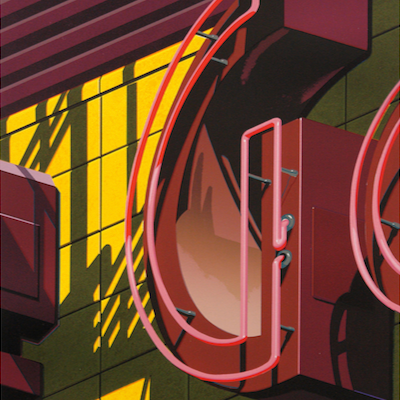
Details
Artist
Styles
Offset lithograph in colors on wove paper. From the limited unnumbered edition of 1000. Signed in pencil. Robert Cottingham’s Art (1973) is a striking offset lithograph that exemplifies his mastery of photorealism and his fascination with urban signage. The artwork presents a close-up of a vintage marquee sign spelling out the word “ART,” with bold three-dimensional letters in green, yellow, and white set against a vibrant red background. Cottingham meticulously captures the interplay of light and shadow, emphasizing the reflective surfaces, neon tubing, and structural details of the sign. The composition is both nostalgic and dynamic, celebrating American commercial typography and the visual language of cityscapes. Created in a limited edition of 1000, this piece showcases Cottingham’s ability to transform ordinary urban elements into compelling works of art.
Art , 1973
form
Medium
Size
56.5 x 56.5 cm
- Inches
- Centimeters
Edition
Price
- USD
- EUR
- GBP
Details
Artist
Styles
Offset lithograph in colors on wove paper. From the limited unnumbered edition of 1000. Signed in pencil. Robert Cottingham’s Art (1973) is a striking offset lithograph that exemplifies his mastery of photorealism and his fascination with urban signage. The artwork presents a close-up of a vintage marquee sign spelling out the word “ART,” with bold three-dimensional letters in green, yellow, and white set against a vibrant red background. Cottingham meticulously captures the interplay of light and shadow, emphasizing the reflective surfaces, neon tubing, and structural details of the sign. The composition is both nostalgic and dynamic, celebrating American commercial typography and the visual language of cityscapes. Created in a limited edition of 1000, this piece showcases Cottingham’s ability to transform ordinary urban elements into compelling works of art.
- Recently Added
- Price (low-high )
- Price (high-low )
- Year (low-high )
- Year (high-low )
What is Hyper-realism?
Hyperrealism is a genre of sculpture and painting that closely resembles high-resolution photographs. It is an evolution of Photorealism and is often applied to an independent art style or movement that became prominent in Europe and the United States in the early 2000s. Hyperrealist artists focus on extreme detail and precision, creating works that are often indistinguishable from real-life images.










































